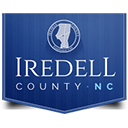Animal Waste Permit Renewal Information – Important
go.ncsu.edu/readext?991030
en Español / em Português
El inglés es el idioma de control de esta página. En la medida en que haya algún conflicto entre la traducción al inglés y la traducción, el inglés prevalece.
Al hacer clic en el enlace de traducción se activa un servicio de traducción gratuito para convertir la página al español. Al igual que con cualquier traducción por Internet, la conversión no es sensible al contexto y puede que no traduzca el texto en su significado original. NC State Extension no garantiza la exactitud del texto traducido. Por favor, tenga en cuenta que algunas aplicaciones y/o servicios pueden no funcionar como se espera cuando se traducen.
Português
Inglês é o idioma de controle desta página. Na medida que haja algum conflito entre o texto original em Inglês e a tradução, o Inglês prevalece.
Ao clicar no link de tradução, um serviço gratuito de tradução será ativado para converter a página para o Português. Como em qualquer tradução pela internet, a conversão não é sensivel ao contexto e pode não ocorrer a tradução para o significado orginal. O serviço de Extensão da Carolina do Norte (NC State Extension) não garante a exatidão do texto traduzido. Por favor, observe que algumas funções ou serviços podem não funcionar como esperado após a tradução.
English
English is the controlling language of this page. To the extent there is any conflict between the English text and the translation, English controls.
Clicking on the translation link activates a free translation service to convert the page to Spanish. As with any Internet translation, the conversion is not context-sensitive and may not translate the text to its original meaning. NC State Extension does not guarantee the accuracy of the translated text. Please note that some applications and/or services may not function as expected when translated.
Collapse ▲Information provided by Christine B. Lawson, Engineer III with Division of Water Resources and the permit application packet.
Every 5 years, NC State Non-Discharge general permits for animal waste management systems are updated. There is a process to update the permits that involves stakeholder and farmer feedback which happened in 2023. The Animal Feeding Operations section of the Department of Environmental Quality (DEQ) uses feedback to consider development of the new permits. The current permit expires on September 30, 2024. The new general permits will have an effective date of October 1, 2024 and remain effective until September 30, 2029. Each facility will be covered under an animal waste general permit by issuance of a certificate of coverage for the respective permit.
Applications were mailed around February 9th to farms. Applications are due by April 3rd. NC DEQ-DWR must RECEIVE the application by April 3rd, which is 180 days prior to the expiration of the current general permits.This is EXTREMELY important for two reasons:
- The current permit requires a farm to apply for renewal at least 180 days prior to expiration.
- If for any reason the new permits are not out by October 1 or if they are stayed by a court, etc., then only those who apply for renewal in a timely manner can continue to be covered under their existing permits until the new one is effective. To be considered to have applied in a timely manner, it must be 180 days prior to expiration.
Submit applications by email to animal.operations@deq.nc.gov or mail to NCDEQ-DWR, Animal Feeding Operations Program, 1636 Mail Service Center, Raleigh, NC 27699-1636.
Look at your 2019 renewal information on Laserfiche. Go to ncwater.org. On home page you will see a GREEN highlighted link that says Laserfiche Document Search. Search by entering your FACILITY NUMBER. Example: for permit number AWS090999 – the facility number is 090999.
What is needed?
Submit one (1) copy of the Certified Animal Waste Management Plan (CAWMP) with the completed and signed application as required by NC General Statutes 143-215.10C(d), either by mailing to the address or email listed.
The CAWMP must include the following components:
- The most recent Waste Utilization Plan (WUP), signed by the owner and a certified technical specialist, containing:
a) The method by which waste is applied to the disposal fields (e.g. irrigation, injection, etc.) - b) A map of every field used for land application (for example: irrigation map)
c) The soil series present on every land application field
d) The crops grown on every land application field
e) The Realistic Yield Expectation (RYE) for every crop shown in the WUP
f) The maximum PAN to be applied to every land application field
g) The waste application windows for every crop utilized in the WUP
h) The required NRCS Standard specifications - A site map/schematic
3. Emergency Action Plan
4. Insect Control Checklist with chosen best management practices noted
5. Odor Control Checklist with chosen best management practices noted
6. Mortality Control Checklist with selected method - Lagoon/storage pond capacity documentation (design, calculations, etc.) Please be sure the table is accurate and complete. Also provide any site evaluations, wetland determinations, or hazard classifications that may be applicable to your facility.
- Operation and Maintenance Plan
If your CAWMP includes any components not shown on this list, please include the additional components with your submittal. (e.g. composting, digesters, solids separators, sludge drying system, waste transfers, etc.)
If you need assistance, please do not hesitate to reach out and I will be happy to help you get the information together.




